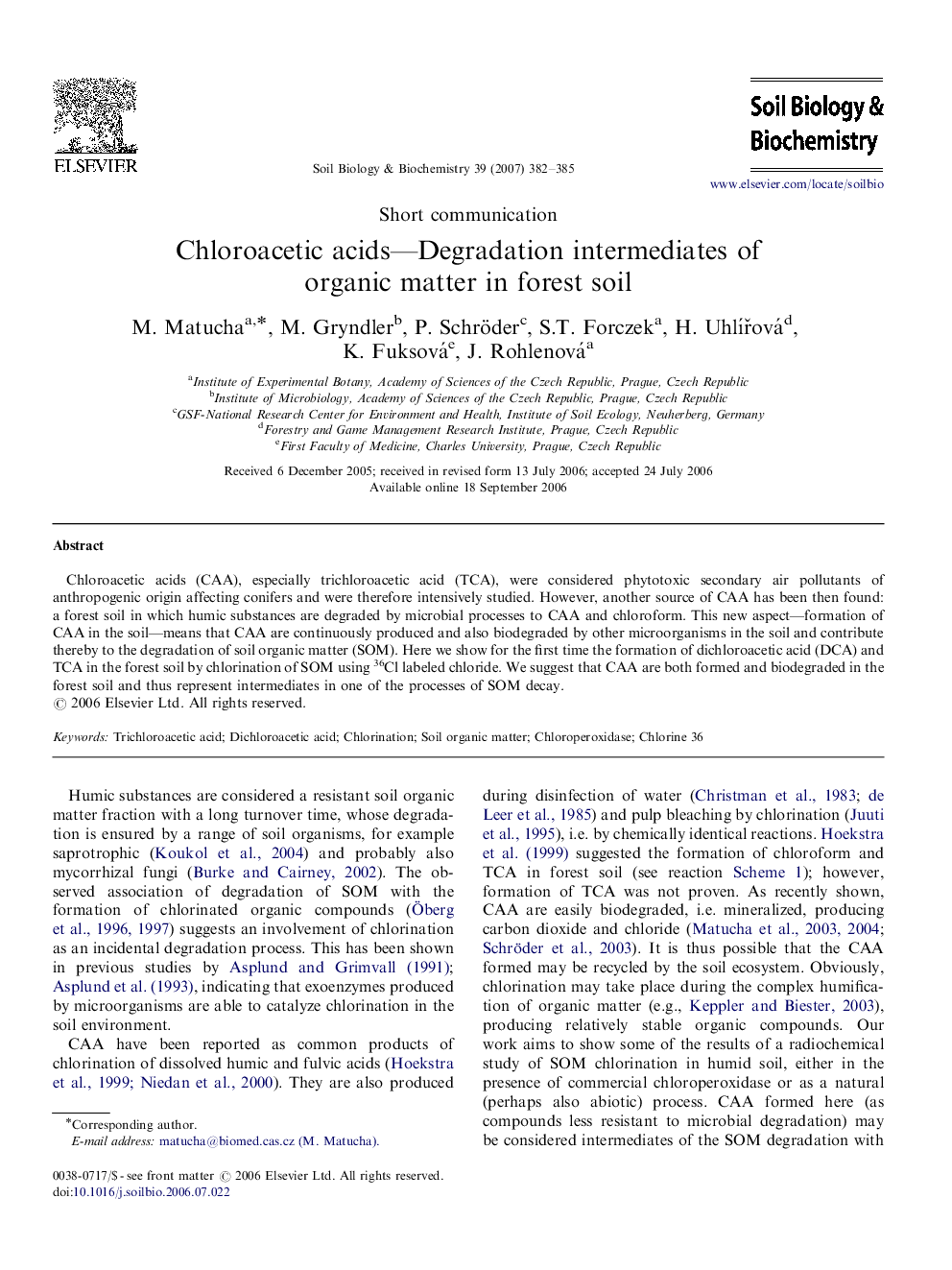| Article ID | Journal | Published Year | Pages | File Type |
|---|---|---|---|---|
| 2025900 | Soil Biology and Biochemistry | 2007 | 4 Pages |
Chloroacetic acids (CAA), especially trichloroacetic acid (TCA), were considered phytotoxic secondary air pollutants of anthropogenic origin affecting conifers and were therefore intensively studied. However, another source of CAA has been then found: a forest soil in which humic substances are degraded by microbial processes to CAA and chloroform. This new aspect—formation of CAA in the soil—means that CAA are continuously produced and also biodegraded by other microorganisms in the soil and contribute thereby to the degradation of soil organic matter (SOM). Here we show for the first time the formation of dichloroacetic acid (DCA) and TCA in the forest soil by chlorination of SOM using 36Cl labeled chloride. We suggest that CAA are both formed and biodegraded in the forest soil and thus represent intermediates in one of the processes of SOM decay.
